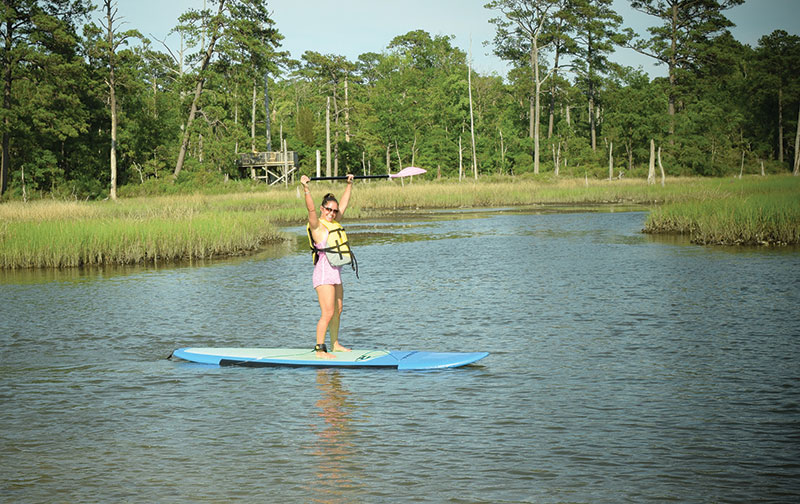Stand Up Paddleboarding is among fastest growing recreational sports in U.S.
Ditch the cubicle.
If you need some relief from the office or cubicle and want to workout, but don’t want to hit the gym, try hitting the water with a paddleboard.
Stand up paddleboarding is a sport that may not be in its infancy—it’s traced back thousands of years to ancient cultures of Africa, South America and Polynesia, after all—but just might be in the toddler stage in terms of its popularity.
It’s among the fastest-growing outdoor and recreation sports in America over the past decade and in addition to the benefits of exercise that works multiple muscle groups, paddleboarding can be an enchanting, adventurous way to work out in a natural environment.
According to the Outdoor Federation’s 2014 Outdoor Recreation Participation Topline Report, stand up paddleboarding topped the nation’s trending activities segment, with a one-year increase in participation of 29 percent. That topped kayak fishing, whitewater kayaking and trail running for the highest one-year percentage increase.
Over the past three years, participation in stand up paddleboarding has shot up 24 percent, according to the Outdoor Federation report. The sport burst onto the recreation sports scene around 2005 and has grown exponentially, nearly doubling in participation since 2010 with about 2 million participants, according to the report.
The Benefits of Stand Up Paddleboarding
The physical benefits of stand up paddleboarding are many. In addition to improving balance, stand up paddleboarders can achieve improved cardiovascular endurance, says Elena Black, PT, DPT, a physical therapist at Tidewater Physical Therapy’s First Colonial Clinic in Virginia Beach, Virginia.
Black recommends stand up paddleboarding because it is a low-impact, full-body workout since the legs are constantly working to maintain balance on the board and the arms, back and shoulder girdle are worked with each stroke. The body’s “core stabilizers”—muscles in the trunk, hips and shoulders that keep everything in place while the body is moving—work throughout the activity in an effort to maintain balance as well as an upright posture on the board, she says.
Paddleboarding can also be used as an alternative exercise to incorporate into cross-training for athletes such as runners. Not to mention, paddleboarding can be a calorie-burner that reduces the impacts on the body’s joints and ligaments unlike running, when you may literally be pounding the pavement or sidewalk.
“It’s a low-impact exercise in comparison to contact sports, and it’s a stress reducer,” Black says.
Exercises for Preparation
Like any exercise, there are a number of ways to prepare for paddleboarding that both enhances your body’s ability to undertake the sport and prepares you to be successful at it. Specifically, Black recommends a number of exercises to prepare or train for paddleboarding, including incorporate a BOSU ball—a fitness training device that promotes balance and strength training—and pushups.
Other exercises recommended by Black to prepare for stand up paddleboarding include:
- lat pull-downs
- planks
- side planks
- squat row
- rotational chop
Getting Started
Here are a few companies offering SUP sales, rentals and/or tours:
- Peninsula Paddle Co. in Williamsburg. Call 888-325-5955
- Beach Echo Tours in Virginia Beach. Call 757-754-8382
- Chesapeake Outdoors in Virginia Beach. Call 757-961-0447
- East Coast Paddleboards in Virginia Beach. Call 757-426-4878
- Happy Winds Kitesurfing in Virginia Beach. Call 757-705-1743
- Surf & Adventure Co. in Virginia Beach. Call 757-721-6210
- SUP Barre in Virginia Beach. Call 757-621-1080
- The Virginia Beach Paddleboard Co. in Virginia Beach. Call 757-572-9157
- CXB Paddle Company in Virginia Beach. Call 757-323-0201
- Rudee Inlet Stand Up Paddle in Virginia Beach. Call 757-343-3560
- Great White Water Sports in Norfolk. Call 757-656-3577
- Tula Adventure Sports in Virginia Beach. Call 757-502-8852

